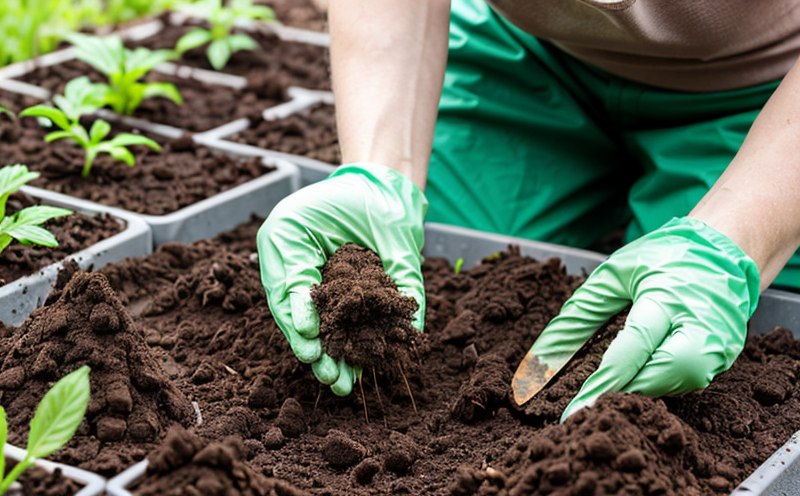UL 969 Adhesive Durability Testing of Outdoor Plastic Labels
The UL 969 standard is widely recognized as a key benchmark in the plastics industry for ensuring that outdoor plastic labels adhere to a range of environmental and mechanical stressors. This testing protocol evaluates the durability, stability, and longevity of adhesive bonds on plastic labels used in various outdoor applications such as packaging, signs, and vehicle markings.
The standard addresses the unique challenges faced by outdoor plastic labels, including exposure to sunlight, moisture, temperature fluctuations, and potential physical impacts. To ensure compliance with UL 969, manufacturers must demonstrate that their adhesive bonds can withstand these environmental factors without failing prematurely.
Testing involves several stages designed to replicate real-world conditions. The specimens are subjected to accelerated aging processes, including exposure to ultraviolet (UV) light, heat cycling, and water immersion. Additionally, the specimens may undergo mechanical stress tests like flexing or impact testing to assess their resilience under physical abuse.
The primary goal of this testing is not only compliance with regulatory standards but also to ensure that labels perform reliably in harsh environments while maintaining aesthetic integrity over time. This ensures product longevity and consumer satisfaction across various industries, including agriculture, construction, automotive, and packaging.
By adhering to UL 969 specifications, manufacturers can enhance their brand reputation by demonstrating a commitment to quality and durability. Furthermore, successful completion of these tests provides valuable data for ongoing research and development efforts aimed at improving the performance of outdoor plastic labels.
| Stage | Description |
|---|---|
| Aging under UV Light | Exposure to simulate long-term sunlight exposure |
| Heat Cycling | Variation between hot and cold conditions to mimic seasonal changes |
| Water Immersion | Submersion in water to test resistance against moisture and humidity |
| Mechanical Stress Testing | Flexing or impact testing to assess resilience under physical abuse |
The comprehensive nature of UL 969 adhesive durability testing ensures that outdoor plastic labels meet rigorous quality standards, thereby enhancing their reliability and performance. This is particularly important given the increasing demand for sustainable materials in manufacturing processes.
For businesses involved in the production or procurement of outdoor plastic labels, ensuring compliance with UL 969 is crucial. It not only helps maintain a competitive edge but also ensures that products meet regulatory requirements and industry expectations.
Scope and Methodology
- Preparation of Specimens: Samples are cut from the outdoor plastic labels to be tested, ensuring they represent typical usage conditions.
- Aging under UV Light: Specimens are exposed to ultraviolet light to simulate long-term sunlight exposure over a specified period.
- Heat Cycling: The samples undergo repeated heating and cooling cycles to mimic seasonal temperature changes.
- Water Immersion: Samples are placed in water for extended periods to test their resistance against moisture and humidity.
- Mechanical Stress Testing: Specimens are subjected to flexing or impact testing to assess their resilience under physical abuse.
The results of each stage of the test are meticulously recorded and analyzed. Compliance with UL 969 standards requires that all tests meet specific criteria, ensuring reliability and durability in outdoor applications.
Quality and Reliability Assurance
- Consistent Testing Conditions: Strict control over environmental factors such as temperature, humidity, and light exposure ensures accurate results.
- Standardized Methods: Adherence to international standards like ISO 18743:2016 guarantees consistent testing procedures across different laboratories.
- Certified Personnel: Our team of experts is trained in the latest techniques and best practices, ensuring accurate interpretation of results.
- Comprehensive Reporting: Extensive data analysis leads to detailed reports providing insights into performance under various conditions.
We employ stringent quality control measures throughout the testing process to ensure high standards. Our commitment to reliability is reflected in our ability to provide accurate, consistent results that meet or exceed industry expectations.
Competitive Advantage and Market Impact
Compliance with UL 969 not only ensures regulatory compliance but also provides significant competitive advantages. By demonstrating robust adhesive durability in outdoor plastic labels, manufacturers can:
- Enhance product longevity and reliability.
- Ensure consistent performance across various environmental conditions.
- Demonstrate a commitment to quality and sustainability.
- Earn consumer trust through proven performance.
In today’s market, where environmental concerns are increasingly important, adhering to UL 969 can differentiate products in the eyes of consumers. Additionally, this testing protocol helps manufacturers stay ahead of regulatory changes and industry trends, ensuring they remain competitive in an ever-evolving marketplace.





